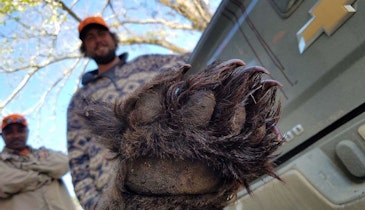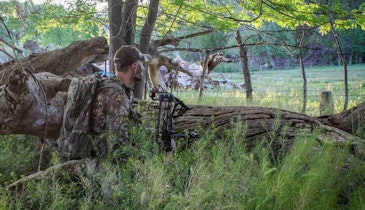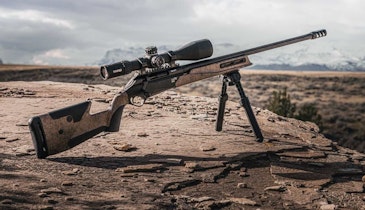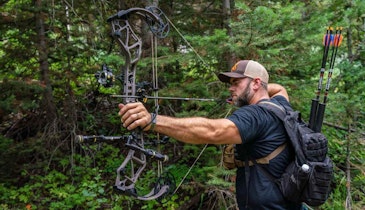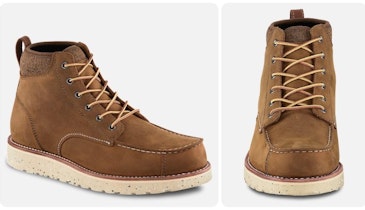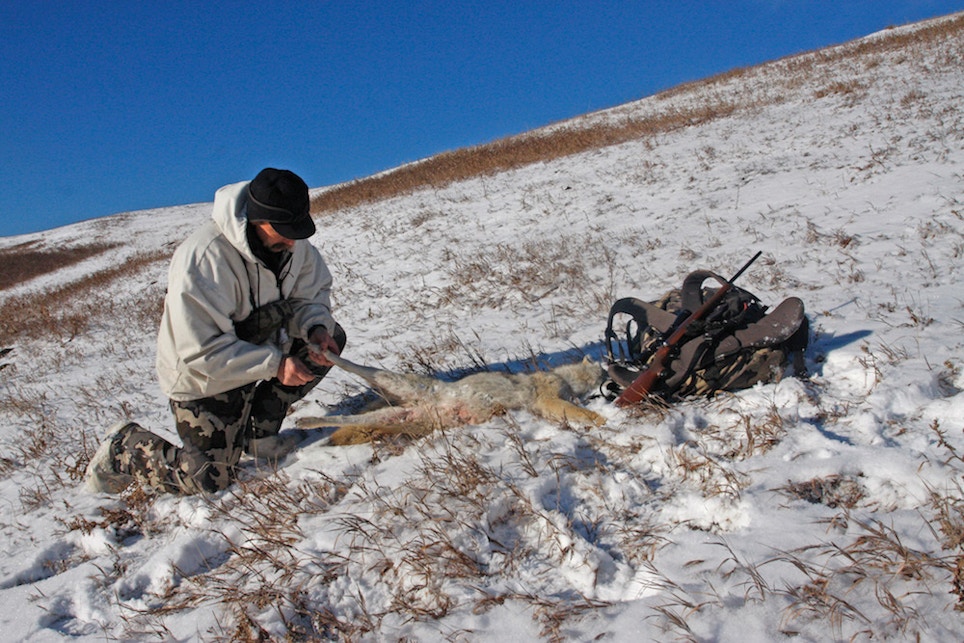
Those predator hunters who are skilled at putting up fur can lighten their load by skinning animals on the fly, when the warm pelt is more easily moved. Photo: Gordy Krahn
Fur is a renewable resource, a gift from nature that just keeps on giving. In addition to extending the hunting season into the doldrums of winter and providing a ready cure for cabin fever, the fur we hunt and harvest has monetary value. But it’s those steps taken after the hunt — along with current market conditions — that determine how much coin the local fur buyer or auction house is willing to fork out for your efforts.
Fur garments have historically been a universal symbol of wealth, fame and power, and it was the abundance of furbearing animals that provided the impetus for the exploration of the North American continent — with annual rendezvous providing the social hubs where trappers and mountain men sold their hides and replenished their supplies. These festive events were attended by trappers and their families, Native Americans, vendors, travelers and, later on, even European tourists.
Fur prices fluctuate based on abundance, fashion trends, local and foreign economies, social sensibilities and a host of other factors. A classic historical example is the beaver top hat trade. Fashionable hats made from beaver “felt” were all the rage during the late 1700s and early 1800s, but by the 1830s became unfashionable when silk top hats became the new symbol of high society.
From Fortune to Famine
But it was the market crash of 1987 that left the deepest, most recent scar, as fur prices tumbled to historical lows and stayed there for years. While fur prices have fluctuated in the decades since, with few exceptions they have never rebounded to their pre-crash splendor. But the fact remains: Fur has value. Hey, even if the return for an evening in pursuit of coyotes, foxes or bobcats is a tank of gas for the pickup and a box of .22-250s it’s worth the effort to market those skins.
In recent years, coyotes and bobcats have accounted for some pretty decent fur checks for trappers and fur hunters — prime coyote pelts a favorite for trim on winter garments and bobcats for high-fashion coats.
Typically, the farther west and north you go on the North American continent, the better the quality of the fur is and, hence, the greater the value. And while prices have softened a bit, coyotes with pale fur and white bellies from southern Canada, Montana, North Dakota and Idaho command the best prices. A sale in Fallon, Nevada, saw 520 skins sell for a $61.17 high — with averages at $24.56, according to the Trapper’s Post July-August 2022 Fur Market Report. At the Fur Harvesters Auction in March Western coyotes sold at an average of $50.33. Certainly down from recent years, but still worth the effort to market them.
Western bobcats continue to see interest from buyers, especially those coveted Western XXXL-XXL cats with clear, spotted bellies. At the Fallon sale, they went for an average of $431.28 with an impressive top price of $1,554.22. Other regions — and grades — see considerably lower prices. The market for red and gray foxes has been a tough sell in recent years — with only the very best furs finding a home on the market.
Marketing Your Furs
Mike Wilhite, owner and publisher of Trapper’s Post magazine, and long-time fur trapper and fur handler, says fur hunters have several options for marketing their furs, ranging from selling unskinned carcasses to the local fur buyer to offering finished pelts for sale at state trapping association and international fur auctions.
“There aren’t as many options today for selling fur like there was 30 years ago,” Wilhite said. “There are still a few country buyers left and, for the most part, they’re the best option for fur hunters. Many country buyers will buy fresh canines and ’cats whole and put them up themselves. If you don’t know how to properly handle skins, it might be beneficial to you and the buyer to present them whole. If you’re a good skinner, you’ll likely make a few extra dollars by pelting the animals yourself and selling them to the country buyer “green.” Green simply means they’re skinned but not stretched and dried. Though many buyers will buy whole animals, it’s best to check with them first because some do not.”

Profit in Preparation
According to Wilhite, it’s a good idea to clean the animals up a bit when selling them on the carcass to the local fur buyer. “Some minor touchups in the field might mean a few extra bucks at the end of the day,” he said. “First off, clean up as much blood as possible. This can often be done in a stream or pond, or by using snow. I usually carry some wet wipes to clean up excessive blood. It’s also a good idea to plug any entrance and exit holes. A wet wipe or piece of paper towel works well for this. And do it as soon as possible. Blood is easier to clean up when it’s fresh.”
Wilhite says a little grooming can go a long way — using a comb or brush purchased at a pet store. “Brush away dirt and burrs from the fur and generally try to make them look nice,” Wilhite said. “I’ve seen buyers reject hides that were full of burrs, telling the seller to take them home and clean them up. Once all the burrs were removed the seller was given a premium price. You have to understand that any time a buyer spends cleaning fur is overhead for them. Quite often pelt handling is hired out, so the better you present your fur the less money the buyer has to spend preparing it, which translates to more money in his — and your — pocket.”
Sell your fur as soon as possible, Wilhite says, if you want to get top dollar. “I bought fur back in the 1980s, and I despised carcass coyotes that were hung in a shed for a few weeks before they were brought it,” he said. “The seller, usually erroneously, thought it was ‘cold enough outside’ for long-term storage. The bellies of canines will turn green and [the fur will] begin to slip quickly after death if not properly handled. Stored outside in 40°-plus temperatures is less than ideal. Don’t be surprised if a buyer doesn’t want your ‘aged’ carcass goods.”
What about those hunters who know what they’re doing and elect to put up their fur? Wilhite says fur hunters who have the equipment and the know-how to put up fur will be rewarded. “Country buyers will pay a premium price for well-handled pelts because they don’t have to do anything to them,” Wilhite said. “There are also a few traveling buyers out there who would love to get their hands on ‘put up’ fur.
“Many state trapper’s associations host wild fur auctions throughout the winter,” Wilhite added. “These are also good places to sell handled and even green fur. These auctions often attract a few area buyers and sometimes out-of-state buyers, depending on what’s up for grabs. Sometimes, because of competition for certain items, premiums are paid and a few extra bucks can be made. But keep in mind that auctions will charge you a seller’s commission. Depending on the auction, that could be anywhere from 5 to 15 percent or more. However, it could potentially be worth it in extra greenbacks in your hands.”
A simple Google search should turn up your state’s trapping association and contact information. As an example, I Googled my state’s association and quickly found links to country fur buyers and auctions. I’m guessing most of the state associations provide these. Two other good sources of information are Trapper’s Post (www.trapperspost.com) and Trapper & Predator Caller (www.trapperpredatorcaller.com) magazines, both of which post fur market reports and auction information.

International Auctions
Wilhite says international auctions are another avenue for selling well-handled fur but cautions that bobcats must have a CITES tag attached to them regardless of how they’re sold.
“International auctions will have a “last receiving date” for getting fur to them. Once you turn it over to them it’s gone and you have no say in what happens to it or what it sells for. You’ll drop off your fur at least a month before the auction so it can be ‘part lotted’ with like fur. After the sale is complete, it’ll take up to a month for your check to be mailed. A seller’s commission of about 11 percent will be deducted as well as prep fee, usually a couple bucks a skin, and transportation costs. However, if you have premium fur it could be worth all the fees and costs. Keep in mind when you drop off your fur that it might be months before you see any money, longer if it didn’t sell and has to be re-consigned to a subsequent sale which might be many months away.”
And then there’s the option of tanning your fur, or having it tanned. I have several tanned furs from animals I’ve trapped or shot hanging in my office, and they make great décor and conversation pieces. There is also a niche market for these goods at trapper conventions, blackpowder rendezvous, flea markets and craft shows, but sales can be hit or miss, according to Wilhite. “Most fur items are selling at all-time low prices right now, with the exception of bobcats and coyotes, so the tanned fur market is well saturated,” he said. “Don’t expect to make big money unless you have some kind of niche. You’ll need to shell out money, upfront, for tanning, which could take months so it’s a slow return on your money. On the plus side, most people buying tanned fur, especially at flea markets, don’t know a good fur from a bad one, nor does it make a difference to them, and will often pay a premium price because it’s ‘pretty.’”
And, without a doubt, Covid concerns are having a negative impact on domestic and, especially, international sales. China is presently our biggest market, according to Wilhite, and without them a large part of the fur industry has struggled. “China is adamantly sticking to their zero-tolerance approach to Covid,” he said “Officials are implementing increasingly aggressive measures, ranging from internal travel restrictions and snap lock-downs to mass testing of millions in an attempt to rein in the virus. China is becoming more isolated, and it’s beginning to disrupt their economy. With China sticking to this strategy, which includes strict lock-downs — even after the detection of one [Covid] case — extensive testing, heavily controlled or closed borders, as well as quarantine mandates, consumers will be under pressure, and that includes consumers of fur.”
The absence of Chinese has disrupted wild fur producers here in the United States, who rely heavily on manufacturers and consumers from that country. In turn, many U.S. fur buyers have backed way off on prices, with some backing out completely. “Several large traveling buyers have postponed route stops for the 2021/2022 season and are in a wait and see mode,” Wilhite said. “The past two years saw no live international sales of wild fur as the only auction house is in Canada and their borders were closed from March 2020 until August 2021. Internet sales were conducted, which helped move some articles, but they didn’t have the same effect as a live in-person sale. China is the big kid on the block when it comes to fur consumption. Without their presence, because of Covid, the wild fur industry will suffer.”
While it’s true that today’s fur market lacks the vigor it had prior to the 1987 crash, the fact remains that fur has value that hunters can tap — one of the very few hunting endeavors that can actually pay its own way. And if it transforms an otherwise mundane winter day into and exciting and profitable outing with a fur check waiting at the end of the trail, so much the better.
